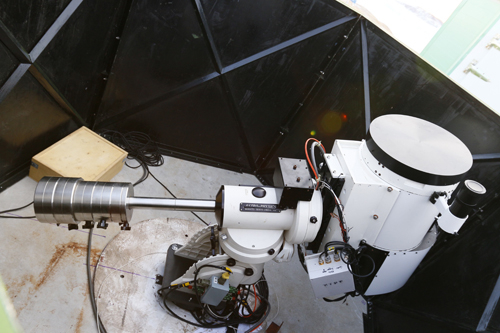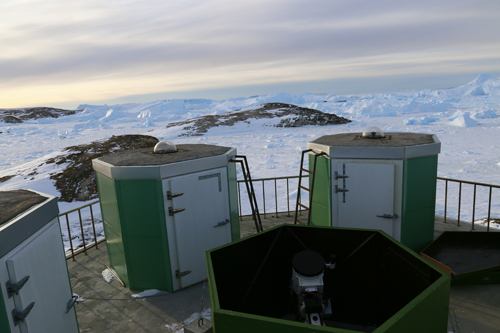The aperture of BSST is 300mm, and the field of view is 4.8°. It was achieved the observation of multi-band and large field of view. Extreme operating environment was also fully considered. Several methods, such as defrost on mirror, precise focusing, filters switching and automatic pointing and tracking.
The unattended automatic operation was achieved in BSST. BSST was started to develop in December 2013. Through April to June 2015, overall performance testing was carried out at Gaomeigu observatory, Lijiang, Yunnan Province. In October, 2015, BSST was shipped to Zhongshan station, Antarctic, by Xuelong ship.
Now BSST is operating at Zhongshan station. There are two purposes that observation at Zhongshan station. The first one is to test the capacity of BSST to work smoothly in the extreme environment. The other purpose is to use the ability of Zhangshan station in supportability to Kunlun station in Astronomy.
The final installation site of BSST is Kunlun station, Antarctic (S80º25’01” E77º06’58”). Kunlun station is a unique geographical location that is very suitable of optical astronomical observation due to the research results of the last ten years.
For example, excellent seeing, low atmospheric boundary layer, polar night etc. Astronomical equipment have been installed one after another at Kunlun station since 2008. The observation have been carried on by astronomers. The results of site testing and observation showed the superiority of Kunlun station.
But the extreme natural environment (the lowest temperature reached -80℃, 4087 meters above sea level) has made great influence on the stability of the telescope. Optimal design and rigorous testing of all subsystems of BSST had been done for the extreme environmental conditions. The requirement functions of the telescope had successful completed.

image of 47 globular clusters of Cuckoo constellation

BSST atAntarctic Zhongshan Station

BSST at Antarctic Zhongshan Station